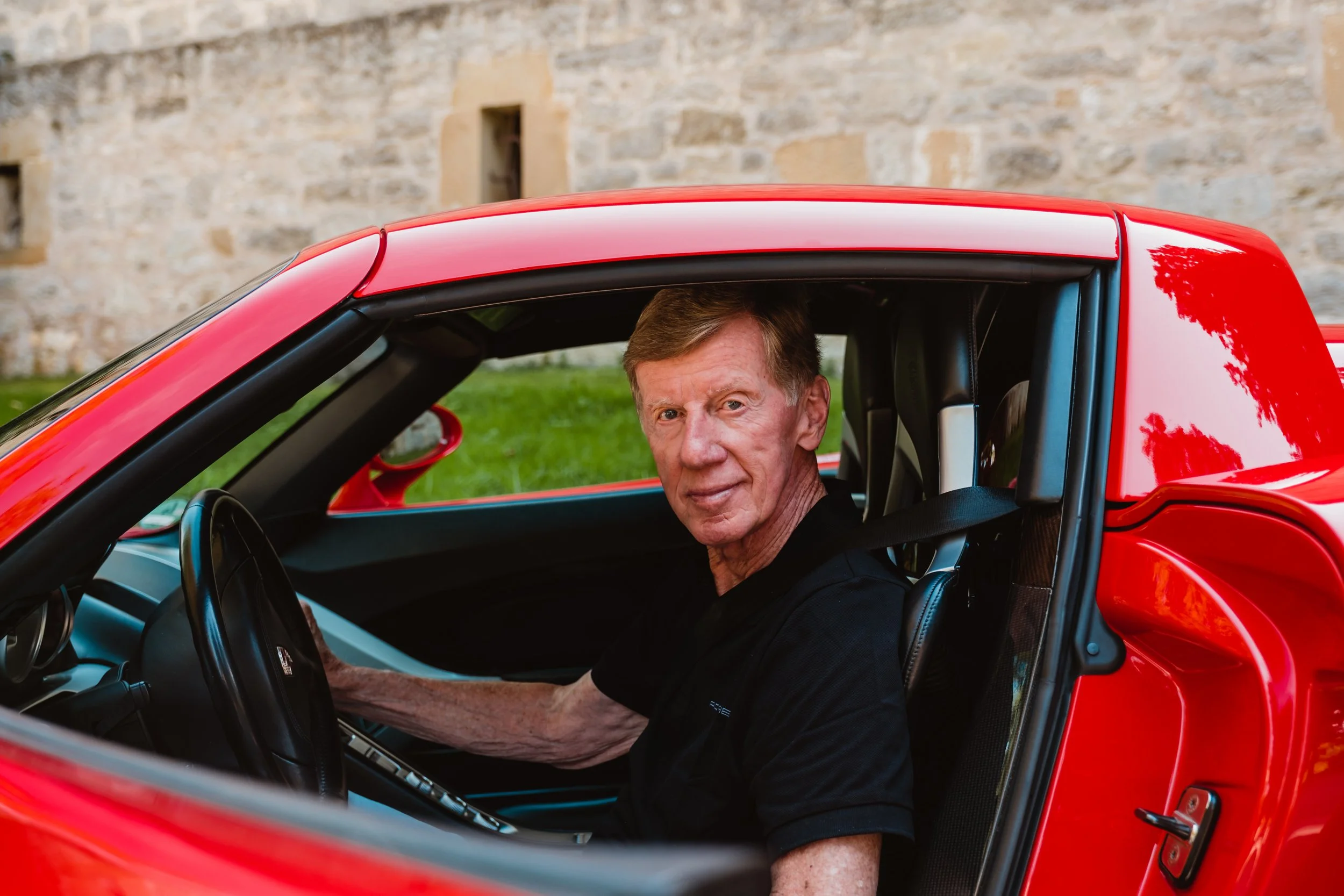Chemmy Alcott, Olympic skier and TV presenter
Chimene “Chemmy” Alcott is a four-time Winter Olympian, ski coach, BBC Ski Sunday presenter and keen driver. Last winter, she challenged herself to drive the Škoda Enyaq around the Alps — learning the hard way how to make an electric car work over 4,500 miles in the mountains.
“ I love the chicanes, the turns, the views…the surroundings are incredible and very special. ”
“I lead an incredibly hectic, noisy life, being busy all the time either with work or with my two boys who are six and four, so when I get in my car I drive in silence – it’s a time when I can be really present and mindful.
I get distracted easily whether by social media, music or the general noise of life, but when I drive a noiseless car in the mountains I have complete tranquillity around me and stay in the present. I love the chicanes, the turns, the views…the surroundings are incredible and very special.
Learning to drive was the ultimate independence for me. I began skiing aged 18 months and ski racing at three, so for many years while competing I was driven around by my coaches. I was the youngest of a big family so as soon as I turned 17 and passed my test I was quickly the designated driver as I was a non-drinking athlete. I am quite an exhibitionist and never needed alcohol to have fun; I still don’t, so always happy to drive.
Early on, driving was a big escape for me from every walk of life. I just loved going on adventures and exploring by car. I have spent so much time driving that I can now do the seven- or eight-hour trip from London to the Alps without even blinking — my children love a long drive, too. They settle happily and look forward to the adventure.
I am passionate about preserving the mountains and environment; over a lifetime in the mountains I have seen first-hand the effects of climate change on ski resorts. So this winter I decided to do the season in an electric car. I was warned not to, and that the infrastructure isn’t ready, but I jump into with things with two feet and if someone tells me not to do something, proving them wrong is the best motivation.
I perhaps got more than I bargained for — I drove 4,500 miles over the course of the winter while filming Ski Sunday, as conditions were poor so we chased the snow. In the space of two months I drove from London to Flaine (France) to Adelboden (Switzerland) then on to the Schilthorn and Wengen then to Kitzbühel and Schladming in Austria, a hop to Germany then back to Flaine and to Courchevel for the Ski World Championships.
Driving in the mountains is an acquired skill and I don’t think you can ever learn enough. The first time I drove on ice was in Åre, Sweden, on the Södra Lötsjön lake, in a race against Graham Bell for Ski Sunday. It was about being as fast and loose as you can – and we very competitive. My whole life I’ve been told how to increase traction on icy roads and for this we were allowed to rag it around and lose the rear.
An electric car is so good on a slippery surface, they read the road, and the downhill sections of driving mountains are excellent for charging the battery — and finding charging spots was the biggest problem. Before I left, I downloaded 15 apps for the different countries I’d be visiting and planned my routes in incredible detail. The Chargemap app was one of the best, as you can specify how much charge you need at the end of your journey according to whether there was a charging station at your destination, as sometimes I arrived somewhere knowing I’d be unable to charge.
I had a roofbox on my Škoda Enyaq, which impacts the range, but I’d get around 280 miles out of it — though this was significantly reduced when I put the heating on, so I wore a thick jacket and gloves and would do heat blasts with the climate control for two minutes to warm up. In doing that, I watched the range drop from, say, 250 miles 225, so I had to be sparse with it. An electric car gives you so much feedback, it’s perfect for a really competitive person – monitoring how you drive, how you brake, accelerate and how smooth you are…
Charging really was a nightmare in places. I had to download many more apps and ran out of data on my phone, alternating between buying country SIM cards and calling my husband Dougie in the UK to ask him for help. During the World Championships in Courchevel we stayed in Bozel which had no charging points, so I stayed below 10% charge the entire week, only charging by braking downhill during the half-hour drive back down the mountain.
Another time, I booked a hotel specifically because it had chargers but arrived at 3am to find a car had been dumped there while still attached so the charger couldn’t be used. I did actually start crying at that point…
There were, of course, high points. I went to Germany to meet Škoda for a photo shoot and we drove up the Rossfeld Panoramastrasse. It was foggy, so we had absolutely no expectations about the scenery, our mission was just to get above the clouds. We kept driving up, up and up, past an old retro T-bar, to the peak of the mountain over thick fog. Looking down on the clouds, the view was absolutely amazing — and the silence.
I learned to turn charging into a positive experience. For the first three weeks I passed the time with coffee and cake but soon realised this wasn’t healthy; so instead planned hikes, yoga, my weekly shop or did laundry while the car was charging, which made it amazingly satisfying and time efficient.
Some European countries are better than others with charging infrastructure — the north of England is terrible, while some parts of France are incredible. On the A40 to Chamonix, for example, there are 200Kw charging stations everywhere, eight of them at a time, and most of the McDonald’s restaurants in Austria have 150Kw chargers.
Driving an electric car for a winter in the Alps really hardened me up, but I have come away with one thought: the world needs to get its act together with infrastructure if we are going to make electric vehicles work. And I hope we do.”
Words Abi Butcher Twitter | Instagram
































When he’s not building retro hypercars and restomod Porsches, Jan Kalmar hosts incredible driving adventures all over the planet. But what’s his favourit?